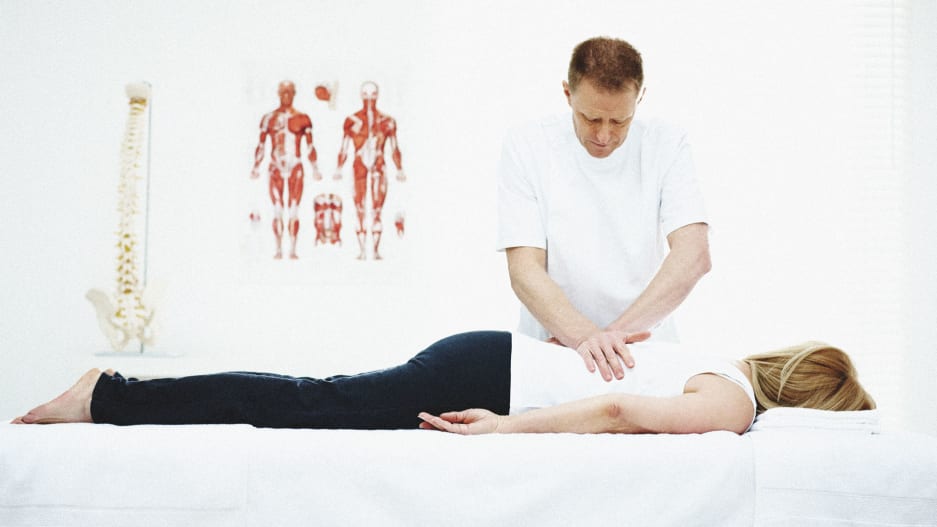Now they’re looking for other ways to help patients manage chronic pain—such as acupuncture and chiropractic care.
Original Article By : BY RUTH READER
In the past decade, some in the medical community have come to endorse alternative forms of medical practice such as reiki, acupuncture, and even scientifically dubious practices like energy healing. For hospitals, alternative medicine has become a distinguishing and sellable feature set that is helping to prop up their revenue. However, insurance has been slow to cover these services, some of which don’t have any scientific backing.
But insurers are slowly becoming more willing to pay for some of the longer-established alternative medicines such as meditation, chiropractic care, and acupuncture, which recent studies show can help with chronic pain management. As regulators and health systems move to reduce opioid prescriptions, health insurers are giving these treatments a second look.
The latest support for alternative medicine comes from the Center for Medicare and Medicaid Services (CMS). Last month, the nation’s largest healthcare payer expanded its coverage to include acupuncture for lower back pain. CMS will cover up to 12 sessions taken over the course of 90 days with the potential for eight additional sessions if the patient shows improvement. However, since acupuncturists are not recognized by CMS and cannot bill for services, acupuncture work must be done by a trained nurse practitioner, physician, or physicians assistant within a traditional doctors’ office. Still, the move illustrates a willingness by one of the most scrutinous payers in the country to find value in methods that it previously treated skeptically.
CMS isn’t the only payer newly considering alternative forms of pain relief. In November 2019, UnitedHealthcare expanded its chiropractic coverage with a new lower back pain offering. Patients with access to the new plan pay $0 out of pocket when they treat lower back pain with physical therapy or chiropractic care. According to its own internal analysis, UnitedHealthcare estimates that in the next year it will reduce spinal surgeries by 21% and use of opioids for lower back pain by 19% through this plan. There are currently 30,000 chiropractors in its network.
The company is also investing in acupuncture, yoga therapy, massage, and nutrition counseling. “UnitedHealthcare has a very thorough process for evaluating healthcare professionals and reviewing published literature related to new and emerging treatments and technologies, including holistic healthcare methods,” says David Elton, who is in charge of strategy around delivering chiropractic care, sports medicine, and physical therapy at UnitedHealth Group Ventures, UnitedHealthcare’s venture arm. Among UnitedHealthcare’s research is a study that showed patients were far less likely to use opioids for lower back pain management if the initial care they received was through a chiropractor or physical therapist as opposed to a primary care physician.
LESS PAIN, FEWER TESTS AND PILLS
CMS and UnitedHealthcare’s moves come nearly two years after the American College of Physicians issued guidance that says low back pain should be treated with acupuncture, chiropractic care, and massage before anything else. “Physicians should avoid prescribing unnecessary tests and costly and potentially harmful drugs, especially narcotics, for these patients,” said Nitin S. Damle, president of the American College of Physicians, at the time the guidance was issued.
Much of the interest in holistic medicine is as an alternative to opioids for managing chronic pain. Studies have shown that yoga, meditation, acupuncture, and chiropractic care can all be helpful for those suffering from pain, in some instances eliminating it and in others making it easier to withstand. Chiropractic care and acupuncture are more commonly covered by health insurers, though to varying degrees based on individual plans. However, yoga and meditation, despite the research, are not covered by health insurers.
A 2017 study sponsored by the National Institutes of Health found that groups that received yoga or physical therapy for chronic lower back pain were significantly more likely to stop using pain killers than those that only received booklets and newsletters on self-care. There is also some evidence that meditation could be useful in chronic pain management, although researchers contend there needs to be higher-quality data to confirm its value.
Good research on such issues is key to getting insurers on board. UnitedHealthcare says when it decides to cover a new practice, it looks for high-quality published research, standards around treatment, and some method of credentialing or licensing for practitioners.
“The CMS decision is an important step,” says Dale West, executive director at the Academic Consortium for Integrative Medicine. “It’s going to allow different payment models, it’s going to allow an increase in the number of acupuncturists, and access. An acupuncturist is not a provider under CMS so that’s what we need to work to change next.” He adds that there is debate whether including licensed acupuncturists under CMS will require an act of Congress or if the Department of Health and Human Services can make that change.
CMS is notoriously specific about what it will and will not cover. For example, it only covers chiropractic care when spinal vertebrae are out of alignment and it’s “medically necessary” to adjust them. West’s organization is currently updating a 2018 white paper that highlights methods of pain management that don’t include surgery or drugs. It will be a comprehensive review of the existing literature on using physical therapy, massage therapy, chiropractic care, acupuncture, yoga, and mindfulness as treatment methods, including for pain management. Kensho Health, a platform that vets independent alternative medicine providers, is helping fund the study so it can be published later this year.
The hope is that the paper will draw more attention to practices like chiropractic care and acupuncture so they’ll be more widely embraced by payers and public officials. It’s being updated in part to reflect a bevy of new findings that show the positive impact of using alternative practices such as yoga, acupuncture, and chiropractic care to manage pain. Much of the new research has come from a burst of funding put toward solving the opioid crisis.
Even though the original white paper isn’t all that old, West says it’s important to incorporate all of the new data. “There have been a lot of new studies that have come out on the effectiveness and on the economic impact,” he says. It will be important, he says, to not only prove these methods work, but that they’re less costly than pain medication in the long term.




